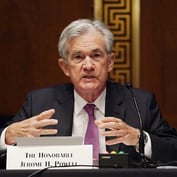What You Need to Know
- Bonds are back, say nearly 90% of financial advisors in a new survey.
- According to the survey, many advisors see fixed income as a way to mitigate portfolio risk by enhancing diversification rather than a way to generate income for clients.
- The biggest challenge for many advisors will be re-educating clients on how rates and bonds work.
Nine in 10 financial advisors in a survey released Wednesday agree that bond yields are back, and say this is the best yield opportunity they have seen in many years. Indeed, more than two-thirds consider this the best return opportunity since before the global financial crisis.
CoreData Research conducted the survey by Natixis Investment Managers and Loomis Sayles in February and March among 350 respondents in the U.S., split equally among independent broker-dealers, wirehouse advisors and RIAs.
Along with their strong convictions about the resurgence in yield, inflation remains the top risk concern for 89% of advisors surveyed, followed by central bank policy uncertainty, the main concern of 56%.
Sixty-nine percent of respondents agreed that lower inflation would make bonds more attractive, yet 60% did not think that inflation or interest rates have peaked yet. With the consensus split in their views on duration, 58% of advisors said they are uncomfortable taking on duration risk.
Fifty-eight percent of survey participants expect short duration to outperform this year, and 71% of those who share this outlook also tend to agree that inflation has not yet peaked. Of the 42% who are betting on longer durations, 55% think inflation already has peaked.
After seeing bonds and stocks both lose ground in 2022, 69% of advisors believe that bonds have not yet fully decoupled from equities. A third are worried about missing the right entry point into the bond markets.
In the current environment, 80% of respondents said it is important to work with an experienced active bond manager, and 71% said active management makes more sense than passive for fixed income.
“Interest rates at or near all-time lows have held bonds to historically low yields, forcing many investors to go further afield not only for income but also for risk management,” Richard Raczkowski, portfolio manager and co-head of the Loomis Sayles relative return team, said in a statement.
“After the past year’s rate hikes, 80% of advisors look to bonds to produce income, and three in four say that bonds once again are ballast in portfolios during times of volatility,” he said.
Beyond Yield
Although many advisors see fixed income as a way to generate income for clients, 85% are even likelier to see it as a way to mitigate portfolio risk by enhancing diversification. Similarly, two-thirds of advisors see fixed income as a way to minimize risk of loss.
Despite the renewed focus on fixed income’s income-generating and risk-management properties, the survey results showed that few advisors are looking for the asset class to fulfill other traditional roles associated with it.
Even though they see this as the best return opportunity for bonds in 15 years, only 47% of advisors are looking to pursue total return with their fixed income investments.
And given their avoidance of the duration risk inherent in government bonds and focus on credit risk, just 45% are looking for tax efficiency out of fixed income holdings — another time-honored function of bonds, Natixis IM and Loomis Sayles noted.








 May 03, 2023 at 02:53 PM
May 03, 2023 at 02:53 PM












 Copyright © 2024 ALM Global, LLC. All Rights Reserved.
Copyright © 2024 ALM Global, LLC. All Rights Reserved.